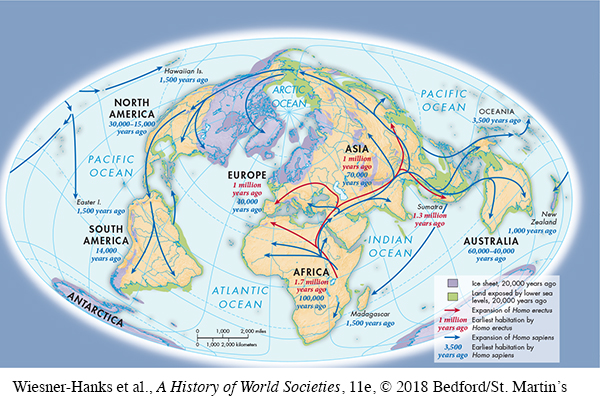2.1 Map Quiz for Chapter 1
true
true
Chapter 1: The Earliest Human Societies To 2500 b.c.e.
Map Quiz for Chapter 1

Map of human migration in the Paleolithic and Neolithic Eras
Select the best answer for each question. Click the “Submit” button for each question to turn in your work. Click the "Previous" button to navigate back if you need to view the textbook.
Question
2.1
Correct. The answer is D.
Incorrect. The answer is D.
S+dp0pO3vOk3XZahqb/AqCAUNi6IWfLgXqZPjqYFiwMsVwGNp311J2Ks4scsMMj9rB8mQml19Vrl50iT7mmih6KdjlRhTNVVnslU/Yz8GoMWigVMi9PgbJnglOvcZ5aFd0j8G1TQoZkuY7W5EFR4RcJugrGjRk4IAYTKZ5IzS3tH382O9sHhulK2t9hv9AAae7G4DMAna8NiqhHh/Ae939lNp3MeDus0JsqkADgO3n6Qp55MJnXYlR6rNdm4acEN0U32pnL2U8feR/Ydp1/iFhA75nI04TwAahUH5KGSDUq0SZ/fH52hZ172eX8w7thtet+BSF7LYyuymMBc
Question
2.2
Correct. The answer is B.
Incorrect. The answer is B.
Jf4O2i8hbaSnXeECiPM4nAhF1FDa5kV893/WAp9/TlIkPPycUXIHavK2MkqZcT1pgLgzr7kKsCTa/YL4cZE4FtPxzk3c36PRSCdHNQDdxUeHvnwuNWLb/Ozr2MKYFdkpH4Ljx9LNHZ3+fuENEMVD+trZsB+HvXm6SMPJQ7cTgo6sPvkuiEccCkWtLY/OVSvq1sC/tGdeX9Th5unzSPgWsBMEdA5EVTW9eWWn38NWRYMHGXJbaazzPXmPaC7dTf7GmShxBsC7cUhWs3IkSaU4WqT41fcX9yFU3o9pbfkOgrVQ+TUpvYPb0A==
Question
2.3
Correct. The answer is C.
Incorrect. The answer is C.
N83++8x30S+nGG1VR8eZmqO4c4IaTzFBZ9LzqFVumyFEhXch2ndUA5+iDUBS35KcUBRgiEByb+X2k5TSGIcuV6MORMpuyW9P98itYT6CDONqJY4nG8OTTCCqXoHi/63osLVCgL2zNq6vdjrAUR/+hyko+eHgacLlekaO21rNAL0psuwEjKlnuRovNfqPDEBt5/WcQzXzrjwJ/WnVfA23iUMSdsk1rjYTgM89Iea+FH+L7E4jkBFWugjwfNUTYeyQon3IuA8xIz4ch+EHZXdpQxhXZtq/Hhqd/iHNlENv2M3ohd6HVTCG6XxcoSCJFSNt5DHNfKwmI/7JTNYwDURI6DWneDOF+V/Vb1qIX7IF+3gF1h9Fi+xUNOeOVq8KhA0fO1YJEBM83A4V8LslGLLDTpWEB7N3ErUKUHHGnfF5YXjI7ylzIQ0R6ZEakMTlmbBi7qm1+/5sje0=
